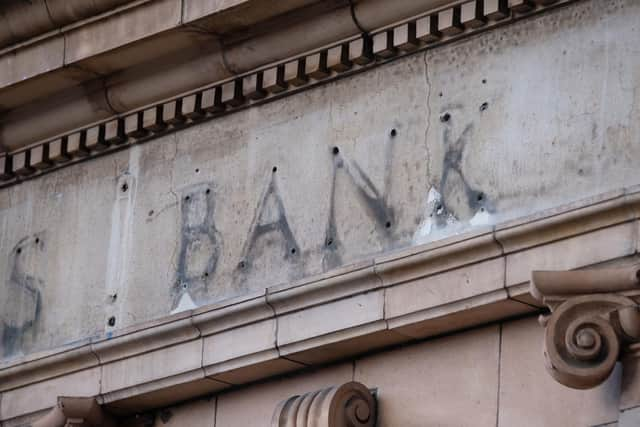More than 5,000 bank and building society branches closed since 2015 – Which?
The consumer group counted 5,162 bank and building society branches which have closed since January 2015.
A further 206 branches are set to close by the end of next year, according to the Which? findings, as of mid-December 2022.
Advertisement
Hide AdAdvertisement
Hide AdRocio Concha, Which? director of policy and advocacy, said: “The shift to paying digitally has made life more convenient for millions, yet there remains a significant minority for whom cash is still vital as they are not ready or willing to make that switch.


“Those who rely on cash need protection from bank branch and ATM closures, with a minimum level of free access to cash guaranteed to ensure they don’t have to pay to withdraw their own money. But protecting access to cash is only useful if it is still widely accepted as a payment method.
“While businesses are best placed to decide whether or not to accept cash, we mustn’t sleepwalk into a situation where cash users struggle to make purchases or are excluded from certain services.
“The Financial Conduct Authority should therefore play a pro-active role in monitoring levels of cash acceptance, regularly publishing data and taking action where appropriate.”
The UK Government has said it will legislate to protect the future of cash. While some shops are still “cash only”, people may find they cannot use cash at all in some other places.
ATM network Link recently found nearly half (45 per cent) of people have been somewhere where cash has not been accepted, or has been discouraged.
Graham Mott, director of strategy at Link, said: “Despite all the talk about the death of cash, I think it is worth reminding ourselves of how important cash is.
“Compared to 2021, the number of transactions this year is up around 5 per cent. Year-on-year we’re also seeing people take out more cash when they visit cash machines.
Advertisement
Hide AdAdvertisement
Hide Ad“To date, around £80 billion has been withdrawn from Link machines this year, and next year we are only expecting a small reduction of 3 per cent to 5 per cent on 2020’s figures.”
The Post Office has an agreement with many banks which allows people to do their everyday banking over its counters.
Ross Borkett, head of banking at the Post Office, said: “Post Office data shows many more families on low incomes are turning to cash to budget in light of cost-of-living increases and the added financial pressures in the run-up to Christmas.”
He added: “Last year, on Christmas Day alone, almost £2.5 million in cash was deposited and withdrawn by personal and business customers.” Initiatives such as cashback in shops without the need to make a purchase and banking hubs – whereby several banks share the same space – have also been launched to help fill gaps in the cash system.
Trade association UK Finance’s figures show that 1.1 million people mainly use cash when doing their day-to-day shopping.
A UK Finance spokesperson said: “The overall number of cash payments decreased by 1.7 per cent last year and we expect cash usage to continue to fall, with cash forecast to account for 6 per cent of all payments made in the UK by 2031.”
Comments
Want to join the conversation? Please or to comment on this article.